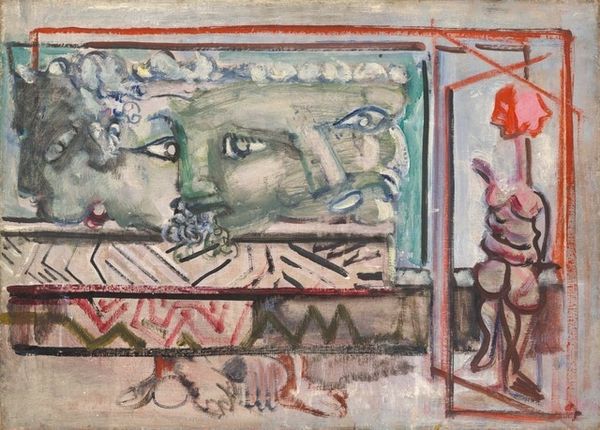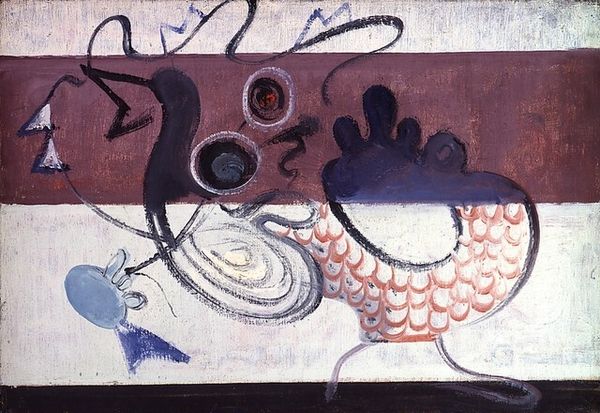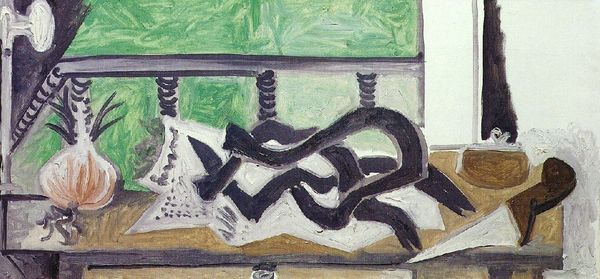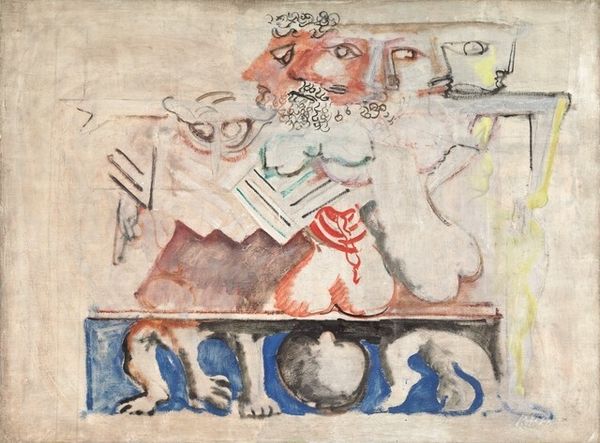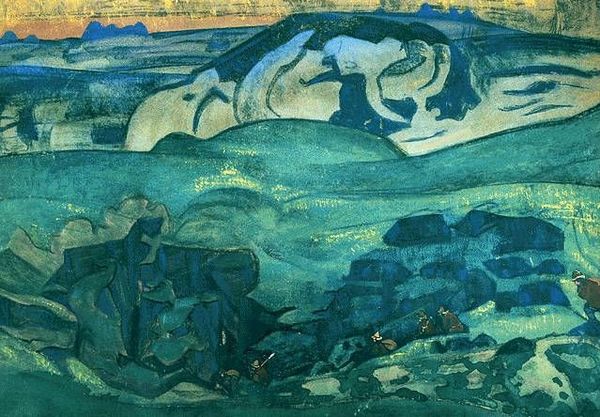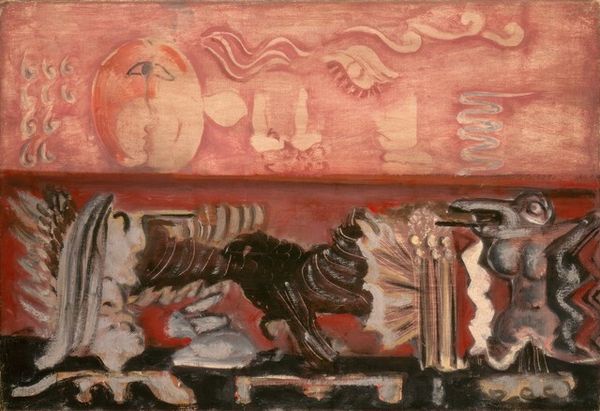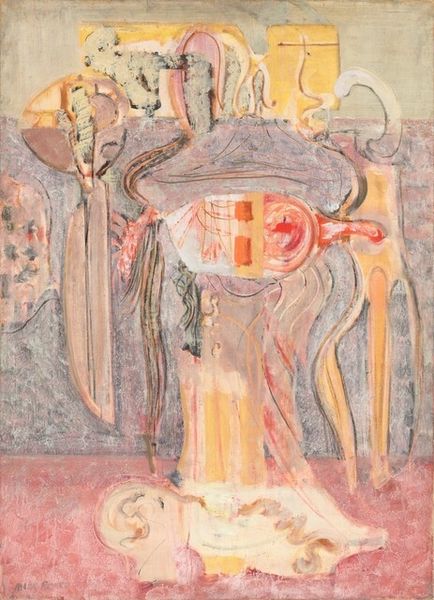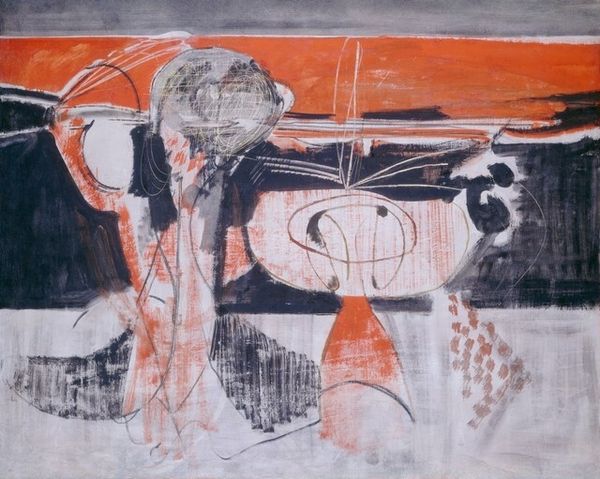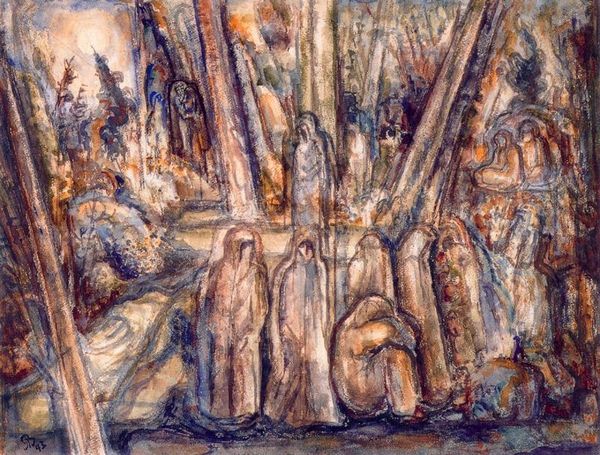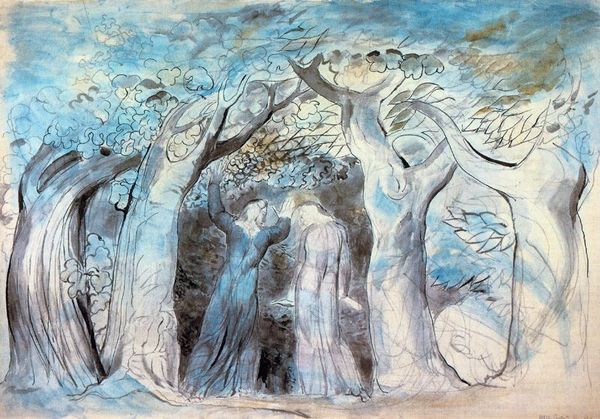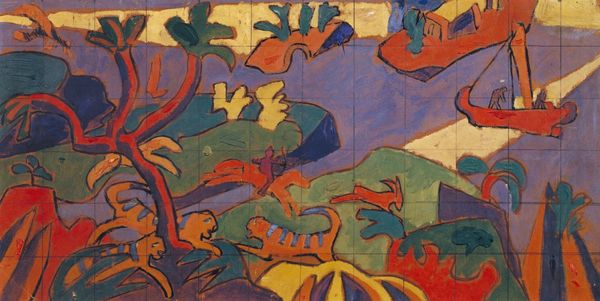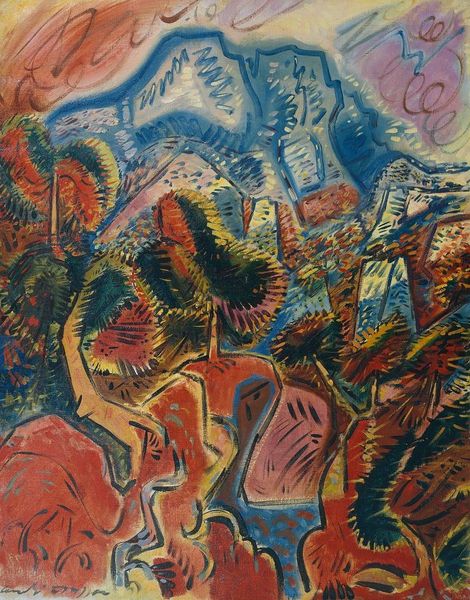
#
abstract painting
#
painted
#
possibly oil pastel
#
text
#
handmade artwork painting
#
fluid art
#
acrylic on canvas
#
paint stroke
#
painting painterly
#
painting art
#
watercolor
Copyright: Mark Rothko,Fair Use
Curator: Mark Rothko, most famously known for his abstract expressionist works, created this untitled piece around 1942, which now finds its home here at the National Gallery of Art. Its layering of imagery immediately speaks to a certain tension, wouldn't you agree? Editor: Absolutely. My first impression is one of unearthed fragments. The rough, almost chaotic application of paint creates a feeling of unearthed history. It is unsettling. I would argue that its power resides in how it reflects on societal structures through its fragmented portrayal of cultural symbols. Curator: Interesting. This piece diverges sharply from his later, more famous color field paintings, reflecting Rothko's evolving artistic vision during a period marked by global conflict and personal introspection. One might ask, what are the cultural symbols present in the picture? How does Rothko's hand at building a painting engage with a moment in time where Western society grappled with defining historical shifts and emerging futures? Editor: Look at how he presents these disjointed figural elements --the almost classical heads, the abstracted torsos. I wonder about Rothko's choice of imagery and whether it functions to challenge art history's patriarchal gaze through abstraction and fragmentation. Curator: The materiality of the piece contributes to that feeling, right? Rothko built a career on public work, often reflecting socio-political themes to challenge perceptions of what fine art should portray. What statements or attitudes do you find most convincing as a historical document of this time? Editor: The incompleteness of the imagery strikes me most profoundly, really suggesting an ongoing conversation about art and humanity. His construction methods force us to consider what constitutes identity and power through its intersectional nature. Curator: Precisely. Rothko's layering echoes society's layering—building on histories while simultaneously dismantling and questioning their narratives. It is as much a visual statement about historical inheritance as it is a personal response to its overwhelming impact. Editor: Ultimately, it is the lack of resolution, of a neat and tidy answer, that makes this particular piece so compelling even now. Its lack of completion pushes one to think about open ended questions, leaving space to engage new ideas, or a multiplicity of concepts regarding form, history, gender, and societal memory.
Comments
No comments
Be the first to comment and join the conversation on the ultimate creative platform.
